‘Persia to Iran’, a travelogue by Australian artist and photographer Nuran Zorlu, introducing Iran’s many treasures including UNESCO heritage sites to people outside of the country, was published in 2015 by the Iranian Cultural Center in Australia with a print run of 2,000 copies.
The book gives a breathtaking account of Iran’s world heritage sites as photographed and documented by master photographer and educator, Nuran Zorlu, who set upon a 20-day journey to Iran to take shots of the country’s multi-religious history, including Islamic mosques, Christian churches and ancient empires.
‘Persia to Iran’ has been registered in the National Library of Australia and currently sits in the shelf of Australian Prime Minister Malcolm Turnbull.
Mr. Zorlu is visiting Iran and made an appearance at the 29th Tehran International Book Fair currently underway in Tehran. We conducted an in interview with him on the phone on Wednesday while he was in the historical city of Shiraz, sitting right before Persepolis Apadana, where the king received tributes from all the nations in the Achaemenid Empire. He was planning to fly to Mashahd next, and from there to Golestan to visit Gonbad-e Kavus as the most imposing ancient monument in the city. ‘I love Iran,’ he said, ‘I like to visit every corner of your country.’
The following is Mehr News Agency’s interview with the multi-award winning photographer on his views on travel photography and how ‘Persia to Iran’ came to be.
Mr. Zorlu, please tell us about how you got into travel photography.
Having a big fund in geography and sociology, it made me explore different cultures; therefore, I started taking my camera when I travelled and consequently I found myself in the travel photography to document what I see in cultures, in history and in the current time.
Where did the idea of writing ‘Persia to Iran’ come from?
The idea of the book ‘Persia to Iran’ started to take shape in my mind after I went to meet Iran’s cultural attaché in Australia. It should be noted that I am an exhibiting photographer and not an author. Two or three years ago, I went to Iran’s embassy to ask for advice on whether I could take a tour to Iran. The newly-appointed cultural attaché was introduced to me by the ambassador I had met in the past during an exhibition I had in 2011 in Sydney as part of a big festival where Iran was among my featured works. I invited the Iranian ambassador of the time to my exhibition which he kindly accepted and eventually he introduced me to Mr. Mohsen Aboutalebi, then the cultural attaché in Iran’s embassy in Canberra. We developed a very good relation, because he served the embassy last in Armenia, and with my heritage, we had a few common things to discuss. Then in another exhibition in New South Wales Art Gallery, which is a very important place for art, I talked about my Iranian experience through a 1-hour Power Point presentation, and showed the presentation to the ambassador and Mr. Aboutalebi at the time. Eventually when I went to meet Mr. Aboutalebi for asking for a tour of Iran, he suggested that I should write a book with my photos and narrative. I had never thought about it before, and a year later, I published the book after 10 months of organizing the pieces and putting the bits of information together. I am proud to say that the Iranian embassy sponsored the book which I am very grateful for them.
The travelogue ‘Persia to Iran’ is not just a journey through locations, but also through time. Can you tell us about the process and how you went about shooting the ancient sites?
As I said, I am a great fan of sociology especially two of its disciplines including demography and organizations like religious structures; I also like ethics and esthetics. And when I combined four of the fields together, I suddenly started to find a love of history and I started documenting ancient sites.

You’ve been to Maku, Urmia, Isfahan, Tehran…; Out of all the shots you’ve taken of these places, which one is your most favorite?
It’s like you’re asking me which one is my most favorite child (laughs.) It’s very hard to choose one because when I put it together, everywhere gives me a different feeling. In Isfahan I was quite taken by how beautiful and old it was. Shiraz is like the soul of Persian identity and Tehran is the capital but the thing is that the ancient city of Yazd is where I came to be most comfortable with. So if I have to choose one city as my most favorite, it would be Yazd.

So can you tell us about the steps that went into shooting those sites?
I just came here as a tourist with a camera and I organized my trips. Having an Armenian background, I am familiar with lots of people around here. And I made so many friends in Iran. I organized my trip in order to go to Urmia first and then around Iran.

What was your most challenging shot?
The biggest challenge in taking photographs of historical sites is the presence of too many tourists. In my photos, I’d like to exclude people because I want to give them a sense of timelessness. Because when you have people in the photo, their presence gives off some reality of time, but I’d like to show the photos without time.
How long did your journey take?
I was in Iran for 20 days and spent 18 days taking the photos for my book. I traveled quite far to take all those photos.
Do you have any interesting memory of your interactions with the locals during your journey to Iran?
Yes, I actually have many interesting memories of Iran. Iranian people are probably one of the warmest and friendliest people I’ve met. Many people are there to help me and if I tell them, ‘I’m sorry I’ve been taking your time,’ they usually say, ‘don’t mention it, it’s our duty to help our guests.’ One particular memory I have of Kerman that I’m probably never going to forget. I was meant to go to Mahan (35km south of the city of Kerman) which is actually home to a beautiful pilgrimage shrine of the Sufi saint Shah Nur-ed-Din Nematollah Vali. I needed to catch a taxi to go there; But it was Friday and lots of places were closed, and nothing was working in its full capacity as it was a weekend; so I asked this man with a little daughter, 8 or 9 years old, same as my daughter was as that time, for help. Then I started speaking with very little Farsi I knew because he didn’t know any English, and at the end I just discovered the taxi stand was half an hour walk away from where I was. But 5 minutes later his entire family turned up and just picked me up and brought me to the taxi stand. The experience filled me with such a good feeling because I was just a stranger and they were never going to see me again, but they went out of their way to help me.
Iranian people are known for their hospitability.
Yeah, I can definitely second that one.

What is your advice for people who want to get into travel photography?
Perseverance is the key in travel photography, but travel photography by itself means nothing if you just concern yourself with taking photos of beautiful places, beautiful locations and beautiful people when they fail to accomplish anything of substance. What I do with my photography is to discover the historical and cultural elements in it. Photography is a language and travel photography is another aspect of it. You have to find something you love and admire, and you have to study it closely before you can start taking photos of it. As I told you, photography should be treated as a kind of language with the intention to communicate meanings. Just how authors use language to write, photographers take photos to express an idea, but if you don’t say something with your photos, they don’t mean anything.
I understand that you have been born in an Armenian family in Turkey and now live in Australia. How does your background influence your work and the way you see the world through the camera?
My background is Armenian and I belong to one of the ancient cultures in the history of the world. I’m actually sitting in front of Persepolis right now as I am talking to you, at the ceremonial hall entry, and as you know, on the southern staircase there are carved designed showing images of representatives of different countries holding gifts. Each section of this stairway is dedicated to one of the nations, and I have counted 18 different nations, and Armenian people was one of them. I think given my background, I am much more interested in history than an ordinary person might be, and I try to bring that keen interest in history into the shots I take.
How has your previous knowledge of Iran changed after you took on this ‘pilgrimage’ to get a first-hand experience of this historical, culturally-rich country?
My philosophy is to expect nothing. So I have a minimal expectation when I come to witness or experience something new. I cannot read from the books or see it from the photographs or films because they all have a bit of angle. But my view of Iran has always been on the nicest side, because I have always been familiar with Iranian people back in Australia. Like Iran, Australia is a multi-cultural nation, where lots of different ethnicities live together. It happens that one of my best friend is actually Iranian, therefore I enter Iranian homes quite regularly. My connection to Iran is not an ordinary one. I have always known that Iranian people are very hospitable, and when I came here and saw how people are eager to help you without knowing you or expecting anything from you, I found that completely out of this world. I don’t think any other culture I have encountered so far is as friendly and hospitable as Iranians. And about the historical elements I found that whatever is left in this ancient culture is being nicely-protected by the country’s cultural heritage department. I have this vast interest in heritage programs and like to preserve the cultures. I believe that every culture needs to live on its own and not according to what other people dictate to them, and I found that in Iran that aspect is actually very unique. It’s a very beautiful place to be in that regard.
What kind of image did you intend to present of Iran? Did you want to make the photographs as close to reality as possible or perhaps with a touch of epic and grandeur?
Bit of both, actually. As a travel photographer, I didn’t come to Iran with any particular expectations. I put in my book whatever I experienced, nothing fabricated, nothing made more epic than what it actually was. With my images, I just leave the decision to people. But I can tell you this one that after the book, the perception of Iran has changed on lots of people’s minds, especially in my close surrounding. I’m going to take a tourist group here tomorrow and next year, I’m planning to bring other photographers with me to Iran.

You have been to the 29th Tehran International Book Fair. What do you think of it?
I have to admit the fair is by far one of the biggest of its kind I have seen, and I have been told by the director of the fair that there are over 2,000 bookstands! it is really, really huge! I actually find putting an organization together like that is very difficult. I didn’t have a chance to see all of the stands of course, I was only in the Main Hall. I found interesting translations of the classics there. And there were some western titles there as well that I was not expecting to see. The presence of some of the classics on the bookstands really mesmerized me, as well as the sheer diversity of books and the different titles. I am aware that not every book is allowed to be displayed in the Fair, but the amount of variety I saw was amazing.
Can anyone buy your book ‘Persia to Iran’ in the fair, and is it available? How about it in original English version?
It’s not available in Iran yet, but I am talking to a few agencies to help with translation of the book into Persian. I do not predict what would happen to the final outcome, but I would be very pleased to find a publisher to publish the book actually. The book is not accessed yet in English either, but I am taking some measures to market it elsewhere other than Australia where the book is available to the public.
Nuran Zorlu is a multi award-winning photographer with a Master of Photography from AIPP. His photographs have been selected as a finalist in prestigious awards such as ‘Head On’ and Sydney Morning Herald’s ‘Shoot the Chef’, and published in many international magazines including Vogue, Marie Claire, and Harper Bazar. He takes tours and conducts photography workshops in Australia and Eastern Turkey. His photographic work of historically significant sites in Iran, that especially relate to UNESCO heritage protection program, have been featured at the Art Gallery of NSW and in Istanbul.
Interview by: Marjohn Sheikhi


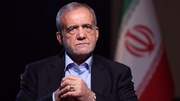
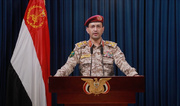

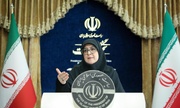
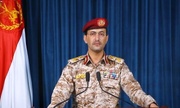
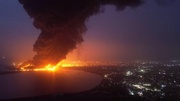
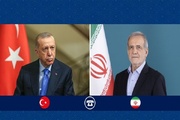






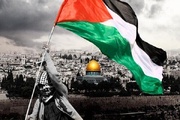

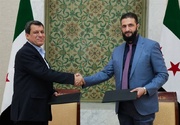
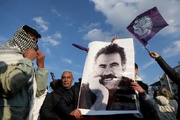
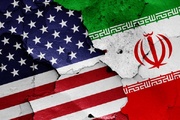
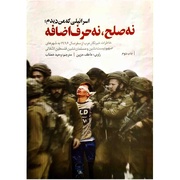
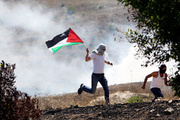
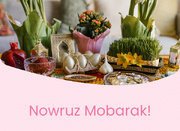
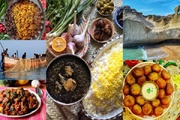
Your Comment